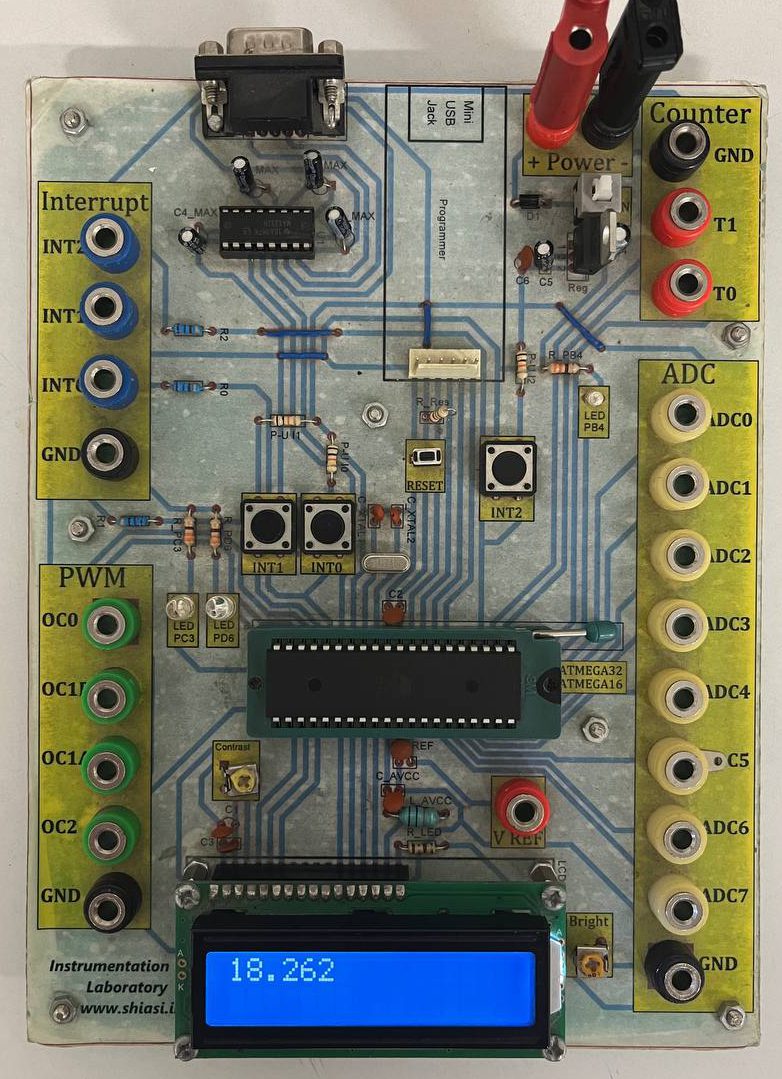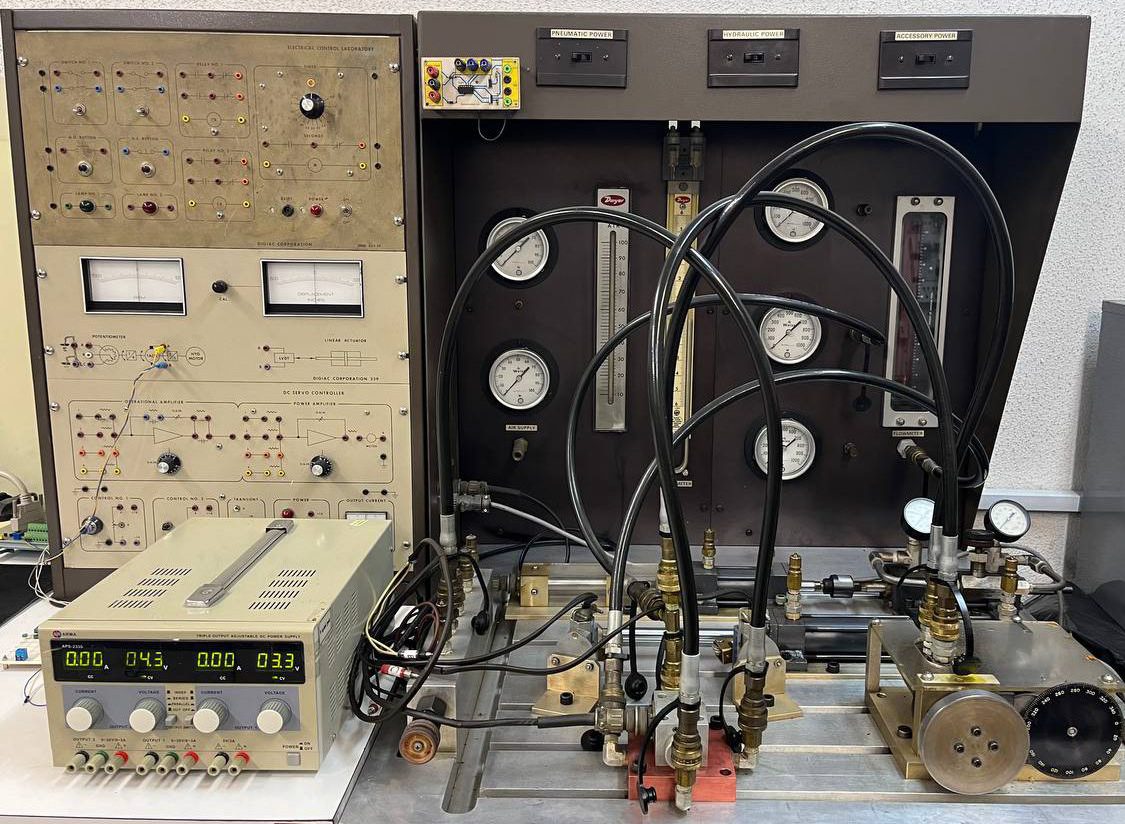
Laboratory Rules
The instrumentation laboratory is provided to familiarize and use common sensors and actuators in the industry. In this laboratory, we will examine sensors measuring temperature, distance, force, speed, and angular position, as well as hydraulic and pneumatic actuators. In some experiments, a microcontroller is used to display and design the side circuit of the sensor. It is expected that after passing this laboratory, students will be able to use them practically while learning more about industrial sensors and actuators.
Rules and Time Schedule File:

Introduction to AVR Microcontrollers
Microcontrollers in the term are microprocessors that, apart from the CPU, at least include memory input and output systems and memory communication circuits inside the main chip and do not need external intermediary circuits to communicate with peripheral systems. Of course, the features of all microcontrollers are not the same, and some microcontrollers, in addition to the above features, include digital-to-analog and analog-to-digital converters or even more specific features. The microcontroller used in the instrumentation laboratory is AVR type and named ATmega32, manufactured by Atmel. It is recommended to read the prepared files to get familiar with the operation of this microcontroller.
Experiment Required Files:

Temperature Sensors
It may not be an exaggeration to say that half of the research done in the field of sensors goes back to temperature measurement sensors. This statistic shows the importance of this type of sensor. Today, in most industrial processes, temperature sensors are used to control the temperature or to display the temperature of the process. Industrial temperature measurement sensors are divided into three general categories: thermocouple, thermistor, and RTD, although each has other divisions. In this experiment, in addition to getting to know the types of temperature sensors, we will also learn the application of each type of sensor.
Experiment Required Files:

Encoder Sensors
Nowadays, rotary motors and drives are widely used in various industries, and in many applications, the measurement of rotational speed or the position of the axis of rotation is desired. Sensors can generally be divided into two categories: digital and analog. Shaft encoders, which are part of the first category, are highly regarded due to their high accuracy. In this experiment, we will examine two types of encoders: absolute and incremental.
Experiment Required Files:

Load Cell Sensors
Many times in workshops or industrial centers, measuring the amount of force and torques on an object is necessary. For example, the amount of forces acting on a bridge should be calculated to check the stability and resistance of it that several thousands of cars pass daily. Transducers called load cells are used to measure the forces on an object. In this experiment, we will first introduce the strain gauge. The following explains the method of making a load cell using several strain gauges and with the help of a bridge circuit. Finally, we will introduce a ready load cell, and by using it and the serial port of the computer, the weight of the objects will be calculated and displayed in Simulink Matlab software.
Experiment Required Files:

Ultrasonic and Infrared Sensors
In ultrasonic sensors, the electrical signal is converted to a mechanical signal (sound wave), or vice versa, and the mechanical signal is converted to an electrical signal. The working principles of these sensors are based on the duration of the sound wave’s round trip, which, with the speed of sound, makes it possible to estimate the distance. The infrared sensor is widely used in electrical devices. The remote control of televisions uses an infrared sensor to receive and send information. Infrared technology was also used in many mobile devices to send and receive information. In this experiment, the ultrasonic sensor will first be told, and then, using an AVR microcontroller and the ultrasonic transmitter and receiver circuits, the distance from the sensor to the obstacle will be obtained. Then, we will use the infrared sensor to measure the distance.
Experiment Required Files:

Level and Fluid Flow Sensors
In process industries, pressure, level, and fluid flow are more subject to measurement and control. Among the most used examples of flow measurement, we can refer to the calculation of concentration, pressure, and level. Measuring and controlling pressure is highly valued in crude oil refining, natural gas production, etc. Measuring the liquid level of tanks is also very important, and many examples of it are used in daily life, such as gasoline sensors of vehicles.
Experiment Required Files:

Hydraulic Systems
Hydraulic systems are widely used in the industry to control and apply commands to various processes. The main elements in these systems include hydraulic pumps, fluid flow control valves, pressure, and fluid flow sensors. This experiment provides a brief description of the hydraulic systems and their control circuits, then the I/O card and how to connect and adjust it in MATLAB software are introduced. The I/O card will be used to transfer the measured signals of the process to the software and apply commands from the software to the electric drives. In the end, a controller is designed to control the speed of the hydro motor, and it is applied to the process by MATLAB software and through the I/O card and peripheral circuits.
Experiment Required Files:
